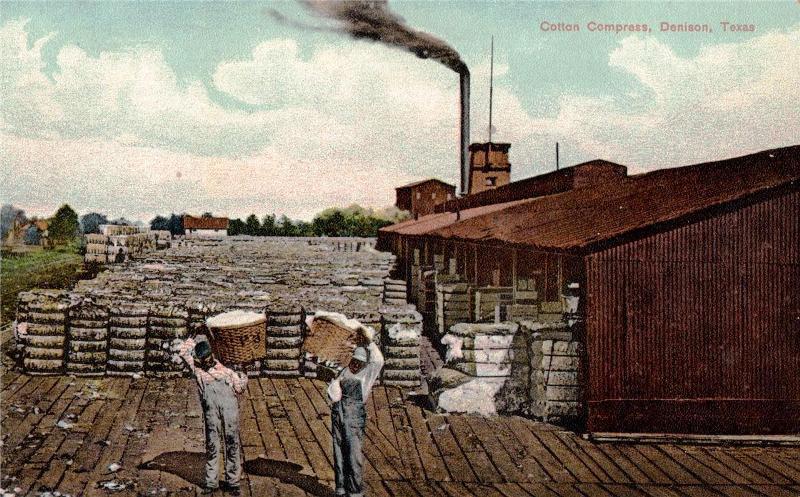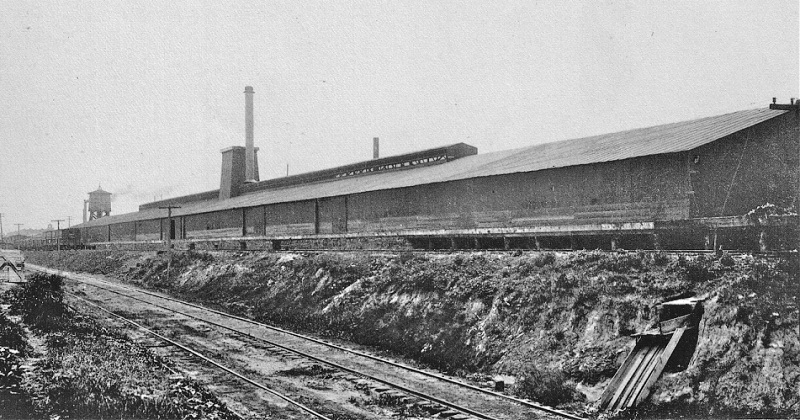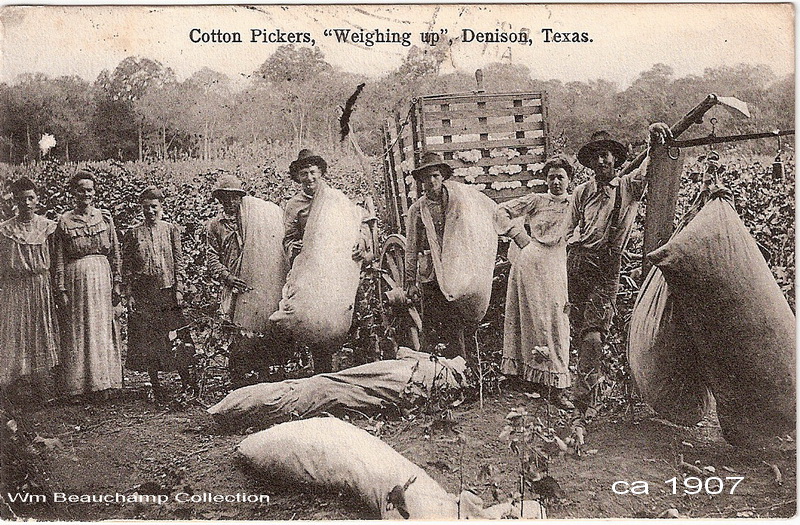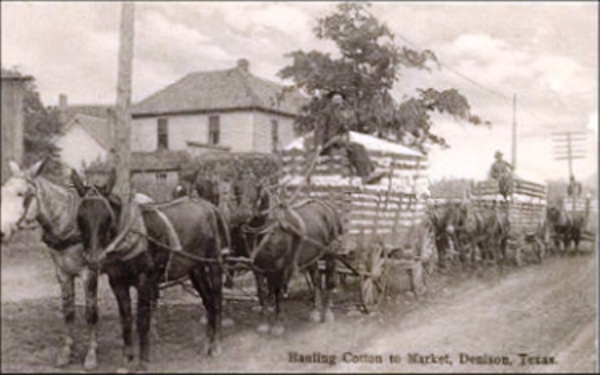
Denison Cotton Compress next to the Katy Railroad tracks. Courtesy Loy Lake Frontier Village 
Fort Scott (KS)
Daily Monitor
November 13, 1873 p.4 Denison, Texas, Items The frame work of the cotton compressing works at Denison, Texas, fell on Tuesday, while a number of workmen were at work upon it. Starr, the foreman, was fearfully injured, and will probably die. Fred Stahl, a German, was badly and it is thought fatally wounded. Others were slightly hurt. Inland Compress
Almost
as old as Denison itself, the North Texas Cotton Compress was built by the MK&T
("Katy") Railroad, which in
The
compress had a capacity of one thousand bales per day, making it
capable of
handling the entire North Texas cotton crop. The compress had a
300-horsepower
steamer operating the engine, which was driven by three boilers twenty
feet in
length, all made of extra iron and double-riveted. To flatten each bale
of
cotton, pressure of 2,400 tons was applied.
The area around Denison was well suited for growing cotton. Once picked, the cotton was brought to the compress, which "compressed" it, producing bales that could be shipped to manufacturers of cotton textiles and other goods. The large building stood on the north side of the 200 block of East Sears Street, along the MK&T tracks. It was located directly across from the Houston & Texas Central (Southern Pacific) Roundhouse, which occupied the south side of that block for about the same length of time. Denison
Daily News

Postcard Cotton Compress Denison, Texas 1900

"Denison Compress Company." Robinson, Frank M., comp. Industrial Denison. [N.p.]: Means-Moore Co., [ca. 1909]. Page 9.
Hauling Cotton to Denison
 In 1908,
the company was again purchased, this time becoming Inland Compress. Manager F.
W. Wilson served for
M. A. Joy of Dallas took over operations in 1926, naming Horace Ash as manager. The company then became the Denison Compress. In 1937,
the compress had a big refurbishing. Some new structures were built on the site,
but the original foundation
The compress operated well into the 1940s. For many decades, scraps of the old structures remained at the site, which was long occupied by Denison Feed and Seed Company. 
Denison History Copyright © 2024, TXGenWeb. If you find any of Grayson County TXGenWeb links inoperable, please send me a message. |



